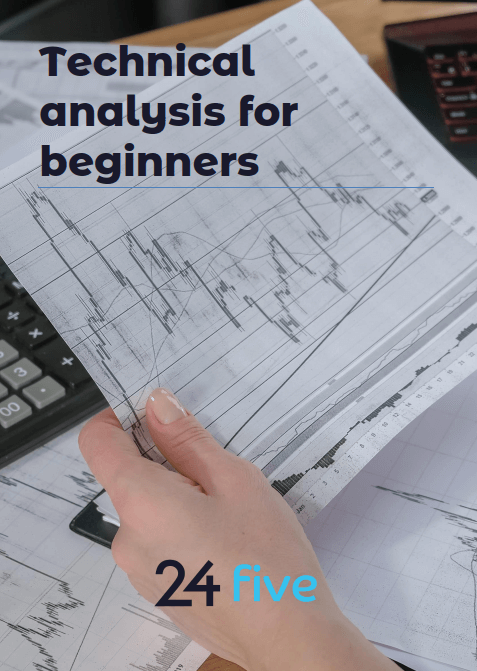Technical Analisis for Beginners [PDF] is designed to give new traders a practical introduction to the principles and tools of technical analysis. This ebook explains how to interpret price charts, recognize trends, and apply popular indicators such as RSI, MACD, and moving averages in real trading scenarios.
Introduction
If you are just stepping into the world of financial trading, having a solid foundation in market analysis is essential. The Technical Analisis for Beginners PDF is designed to give new traders a practical introduction to the principles and tools of technical analysis. This ebook explains how to interpret price charts, recognize trends, and apply popular indicators such as RSI, MACD, and moving averages in real trading scenarios.
What makes this guide valuable is its beginner-friendly approach. Instead of overwhelming readers with complex theories, it breaks down technical concepts into clear, easy-to-follow steps. From identifying support and resistance levels to understanding candlestick patterns, every chapter is crafted to help you build confidence in analyzing forex, stocks, or cryptocurrency markets.
The Technical Analisis for Beginners PDF also highlights different trading strategies such as scalping, day trading, and swing trading, while emphasizing the importance of risk management. Whether you want to make short-term gains or plan long-term positions, this ebook equips you with the knowledge to make informed decisions.
Download the Technical Analisis for Beginners PDF today and start mastering the skills that traders use worldwide to navigate the markets with greater accuracy and confidence.
Excerpts
What is Technical Analysis?
In online trading, Technical Analysis
is presented as a specialized
discipline that delves into the
detailed study of historical price and
volume data to anticipate future
movements in financial markets.
This approach finds its direct
application in the digital platform,
where traders use graphical tools
and various technical indicators to
evaluate financial assets virtually.
By interpreting past patterns,
identifying trends, and establishing
crucial support and resistance levels,
technical analysis in online trading
seeks to provide participants with
the necessary tools for making agile
and informed decisions in a dynamic
digital environment.
This methodology involves the
extensive use of financial charts,
price patterns, and various technical
indicators, such as moving averages
and oscillators, to identify trends,
support and resistance levels, as
well as possible reversal points or
continuation of trends. The technical
analyst presumes that past
information on market behavior can
provide valuable insights for future
decision-making in the field of
trading and investment.
Technical analysis is used by a wide
range of financial market
participants, from individual traders
to financial institutions, and its
application extends to various assets,
including stocks, currencies,
commodities, and cryptocurrencies.
Its deep understanding and effective
application require the assimilation
of fundamental concepts, the proper
interpretation of chart patterns, as
well as the skillful use of specific
analytical tools for informed
decision-making in the context of the
financial market.
Importance of Technical
Analysis in Trading
Technical analysis plays a crucial
role in trading by providing a
structured methodology for
understanding and anticipating
price movements in financial
markets from the study and analysis
of price charts. Technical analysis is
important in several fundamental
aspects of traders’ decision-making
and efficient portfolio management.
Below are the main elements that
underline its relevance in the trading
context.
Table of Contents
Introduction ………………………………………………………………………………………………………………………4
What is Technical Analysis? ..…………………………………..……………………………………………………………4
Importance of Technical Analysis in Trading …..……………..…………………………………………….4
Basic Principles of Technical Analysis .……………………………………………..……………………….6
Glossary …………………………………………………………………………………………………………………..………………………6
Comparison of Chart Types in Technical Analysis ……………..……………………..………..………8
Technical Analysis Tools ……………….…………………………………………………………………..…………..9
Trading Platforms …………..…………………………………………………………………………………………………………..9
Technical Indicators .………………………………………………………………………………….………………………………9
Economic Calendars ………………………………………………………………………………………………………………..10
Pattern Scanners ………….……………………………………………………………………………………………………………10
Earnings Calendars …………….…………………………………………………………………………….………………………10
Market News and Analysis ……….………………………………………………………..…………….…………………10
Forums and Communities ..……………………………………………………………………………………………………10
Backtesting Software …….………………………………………………..………………………………………………………10
Essential Technical Indicators …..…………………………………..…………………………………………….11
Simple moving average (SMA) and exponential moving average (EMA) ..……..11
Relative Strength Index (RSI) ..…………………………………………….………..………………………………………11
Stochastic Oscillator ….……………………..………………………………………………………………………………………12
Moving Average Convergence Divergence (MACD) …………………………..……………………13
Ichimoku Kinko Hyo …………………………………………………………………………………………………………………14
Practical Use of Indicators ………………………………………………………………………………..…………………..15
Interpretation and Buy/Sell Signals ……………….…………..…………………………………………………….15
Divergences and Convergences as Reversal Indicators ……………………….………………….16
Combining Indicators to Confirm Trends ………………………………………………………………………..17
Oscillators and Momentum …………………………………………………………………..……………………18
Technical Indicators of Strength, Magnitude, and Momentum …………………………19
Technical Analysis Patterns .……………………………..………………………………………………….24
Most Popular Chart Patterns …………….……………………………………………………………………………….24
Japanese Candlesticks ..……………………………….…………………………………………………………..27
Most Common Japanese Candlestick Patterns …………………………………………………………28
Trading Strategies with Technical Analysis .………………………………..…………………………29
Scalping …………………………………………………………………………………………………………………………………………29
Day Trading ……………………………………………………………………………………………………….……………………..30
Swing Trading …………………………………………………………………………………………………………………………….33
Risk Management ………………………………………………..……………………………………………………….35
Introduction to Risk Management …..………………………………………………………………………………35
Risk Management Tools …………………………………………………………………….…………………………………37
Practical Tips for Trading with Technical Analysis ……………………………………….………41
